The South African War Memorial, unveiled on 6 June 1904, commemorates South Australians who fought in the second South African War (11 October 1899 to 31 May 1902), between Dutch-Afrikaner (Boer) settlers and Britain and her colonies. It was the first war in which South Australians fought overseas. The first South African War was fought in 1880-1881.
South Australian contingents
Nine contingents comprising 1531 South Australian men served in the Boer War: six contingents sailed from Port Adelaide and three Australian contingents included some South Australians. Up to 1510 horses went with these men. In addition, some South Australians also served as colonial troops, having paid their own way to South Africa or were already present in the region. At least nine South Australian nurses served in the Boer War, under the command of Sister MS Bidmead.
The South Australian (Citizen) Bushmen’s Corps took pride of place amongst the South Australian contingents. It was funded by public subscription and the philanthropy of wealthy individuals. Its most prominent supporter was Adelaide businessman and parliamentarian Sir George Brookman who donated £1000. There were three contingents of the Imperial Bushmen (paid for by London) and two of the Mounted Rifles.
The Bushmen’s Corps, led by Captain SG Hubbe, was farewelled with a banquet hosted by the Mayor at the Adelaide Town Hall on 6 March 1900. Distinguished guests included Premier Frederick Holder and the Minister of War, Chief Secretary John Jenkins. The following day the corps, accompanied by regiments of the local Defence Force, rode on horseback through the city. Streamers and flags flew from buildings and lined the crowded streets. Even trams, bicycles and local horses were decorated for the occasion. Residents from Port Augusta were there to cheer on Lieutenant Charles Marsh Ives on the ‘handsome charger’ presented to him by that town. Governor Lord Tennyson took the salute as the troops passed the Town Hall. The corps left for South Africa on the SS Maplemore the next day.
At least 59 South Australians were killed in action. A further 16 died in connection with the war, while another four died in training or on their return. Captain Hubbe was killed on 12 September 1900. Charles Ives survived: he was Mentioned in Despatches, awarded the Queen’s Medal and five clasps, and made a Companion of the Distinguished Service Order.
Horses sent to South Africa fared badly. Conditions were harsh and they were given little or no opportunity to acclimatise. Many died in battle or of disease. Others succumbed to exhaustion and starvation. Horses that survived did not return home.
The return and commemoration
The Citizens Bushmen’s Corps arrived back in Adelaide on 2 June 1901. After a few weeks recuperating, a social in their honour was held at the Town Hall.
In July 1901 a retired parliamentarian, goldminer and journalist, Joseph Johnson, suggested that an equestrian statue be erected to mark Australian involvement in the war. He wanted a national memorial to ‘commemorate a great event’ rather than a memorial ‘to commemorate certain names’. But not everyone agreed with this. The community had grown disenchanted with the war, especially after learning of the incarceration and deaths of thousands of Boer civilians. The matter was finally decided in parliament where the motion of the new Premier, John Jenkins, ‘That it is desirable that South Australia shall have a worthy national memorial to commemorate the consolidation of the Britannic Empire, and the part taken therein by our soldier sons’ was passed.
On 7 August 1901 a committee, including Sir George Brookman MLC (chair), Premier Jenkins, Adelaide’s Mayor and the Bishop of Adelaide, began the process of commissioning a statue and raising funds. The citizens and schoolchildren of South Australia rallied to the call. Donations soon amounted to £2500.
The sculptor
With the assistance of South Australia’s Agent-General, Henry Grainger, a sub-committee was formed in London to identify a suitable sculptor. An English career military officer, veterinarian, painter and sculptor of horses, Captain Adrian Jones (1845-1938), was recommended. Jones first offered the committee a replica of a work he had entered in a South African competition, on the condition that it would be cast only if the original was accepted. His second offer was to model a smaller work based on a sketch of a Bushman on his horse that he had produced. The committee liked the sketch and agreed to the second option.
Jones consulted with George Henry Goodall, a South Australian veteran of the Boer War, on the dress and attitudes of Australian soldiers as he developed the model for the statue. At the time, Goodall was Regimental Quartermaster Sergeant with the Australian Corps in London for the coronation ceremonies for King Edward VII. Goodall stated later that he modelled for Jones as well as providing advice. Although there is some dispute as to whether the facial features of the statue resemble those of Goodall, other veterans believed that the work was modelled on him.
After completing the statue, the plaster model was presented to Jones’ home town, Ludlow, in Shropshire. Jones later sculpted the statue of Captain Charles Sturt which was unveiled in Victoria Square on 21 December 1916.
The statue and pedestal
The life-size (3.4m high) bronze statue of the mounted Bushman was carved and cast in England. Its energy and patriotic mien were noted even before it left for Adelaide on the liner Wakool in April 1904. A photograph of the statue greatly impressed King Edward. The Princess of Wales and several generals visited Jones’ studio to view the work.
The statue was erected in front of the main entrance to Government House on the corner of North Terrace and King William Street. It sits on a 3.7m high pedestal of Murray Bridge granite designed by Garlick, Sibley & Wooldridge and made by W Waylock of Adelaide.
The unveiling
The unveiling of the memorial was marred by controversy. About 20 returned servicemen from the South East were granted passes to come to Adelaide for the ceremony. However, great ill feeling was generated amongst the soldiers and the community when the passes were cancelled at the last minute as an economy measure.
The unveiling went ahead on 6 June 1904, the third anniversary of the Battle of Graspan in which eight South Australians were killed and a Boer convoy captured. It was also a public holiday for the birthday of the Prince of Wales. Governor Sir George Le Hunte pulled a cord and the Union Jack and canvas covering the statue fell away to reveal the powerful work. Le Hunte commented, ‘It is essentially a war statue, of action suitable to the soldiers who went to South Africa from Australia – men of action – and you will find it as fine a specimen of a soldier as you have ever seen’.
The South African War Memorial was the first war memorial erected in Adelaide. At the time it was referred to as the National War Memorial. It was one of only two equestrian statues in Australia (the other being the depiction of Saint George and the Dragon at the National Gallery of Victoria) and the only commemorative equestrian work. The name was changed to the South African War Memorial after a National Soldiers War Memorial to those who served in the First World War was completed on the corner of Kintore Avenue and North Terrace in 1931.
On 6 June 2004, on the centenary of its unveiling, a commemoration ceremony was held with Governor Marjorie Jackson-Nelson presiding.
The plaques
The pedestal contains four bronze plaques cast from Boer War gun platesby AW Dobbie & Co.
Two plaques ‘In Memory Of Those Who Fell’ on the northern and southern sides of the pedestal list 59 South Australians killed. Missing is Harry ‘Breaker’ Morant, who served in the second contingent of troops sent from South Australia and was executed by the British after being found guilty by court martial of the murder of unarmed Boer troops. Morant was a horse breaker from Paringa Station near Renmark. There appears to have been no controversy at the time regarding his omission. A scroll above the plaques reads, ‘Who Dies For His Country Dies Nobly’.
A plaque on the eastern side records the departure of the 100 officers and men of the South Australian Bushmen’s Corps and acknowledges the private subscriptions towards the cost of their equipment and of maintaining the corps in the field for over a year.
The western plaque commemorates the ‘Valour Of The Citizen Soldiers Of The State Who Fought In The South African War’ and the unveiling of the memorial.


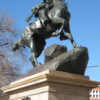

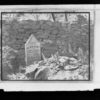
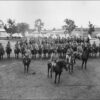
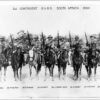
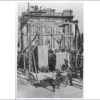
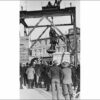
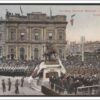
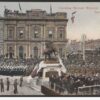

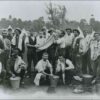

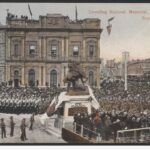
Comments
4 responses to “South African War Memorial”
I am doing family research and trying to find any info on relative South Australian, Malcolm Edward Thomas who served in the Boer War. I am not sure if he even came back. Any help you maybe would be greatly appreciated. Thank you. Judith.
Hi Judith, a good place to start would be this National Archives guide: http://guides.naa.gov.au/boer-war/
The architect H E Sibley of Garlick, Sibley and Woolbridge was my Grandfather , my mother ,Kate’s father.
That’s fantastic, thanks for sharing Robin.